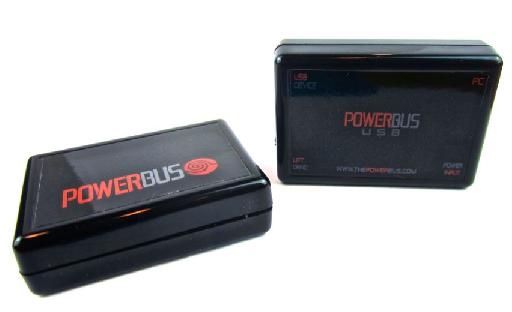Whether your rig is a tube-powered half stack or mixing console, there's one lesson in audio each artist and producer must eventually learn: clean power is important. Subtle hums and pops from your preamp might not audibly color the tone of a crunchy metal riff or dirty bassline, but they can wreak havoc on most everything else'"especially vocals. Condenser mics and sketchy current absolutely don't mix. Maybe you didn't notice any unwanted noise while tracking (shame on you), but if it's there, it will surely roar the moment you begin to tighten things up.
If I sound like I'm talking from experience, well, it's because I am. So, how does one deal with nasty electricity? Power conditioners are the standard in any serious studio environment, and really, they're not that expensive. But maybe you have a USB- or FireWire-powered device and don't wanna lug a rack-sized conditioner around in your backpack. If that's you, take a look at the Powerbus.
How it Works
This matchbook-sized device comes in two flavors (USB and FireWire) and provides any interface or audio unit connected to your computer with clean, isolated power. It's that simple. Basically, you'll connect one side of the Powerbus to your computer and the other to your interface. Then, plug the mini conditioner into a wall outlet and you're good to go. I didn't have any trouble routing my setup initially, but it did take a dance or two with the FireWire cables'"unplugging, rebooting, plugging, repeat'"to get my computer to recognize the connection.
In the Lab
In the interest of being thorough, I recorded several vocal takes using my M-Audio ProFire 610 interface with the Powerbus and proceeded to lay a bunch down without it (drawing power from the PC). Surprise: The PC-powered takes had hum. It was barely audible, but it existed. After compressing the vocal takes and comparing them, it was obvious the Powerbus tracks were less infected with hiss. Obviously, the amount of noise reduction you'll get from the device depends on the current "dirtiness" of your power. But if your equipment, like mine, runs off the same circuit as your washing machine, you'll probably find life with the Powerbus a fair improvement.
Conclusion
Admittedly, scenarios for using the Powerbus are pretty niche. Most audio devices have their own DC or AC power supply, with the exception of budget interfaces the like iRig Pro or Focusrite Scarlett 2i2. And when I call those "budget interfaces," take it with a grain of salt: there are certain instances where a portable, low-fi unit makes a lot of sense'"namely, when you're writing or brainstorming on the go. However, if you happen to misplace your interface's stock power supply, owning a Powerbus can be a true win.
Price: $60 USD Pros: Small and portable. Provides clean power via FireWire or USB. Cons: Costs more than your average rackable power conditioner. |





 © 2024 Ask.Audio
A NonLinear Educating Company
© 2024 Ask.Audio
A NonLinear Educating Company
Discussion
Want to join the discussion?
Create an account or login to get started!